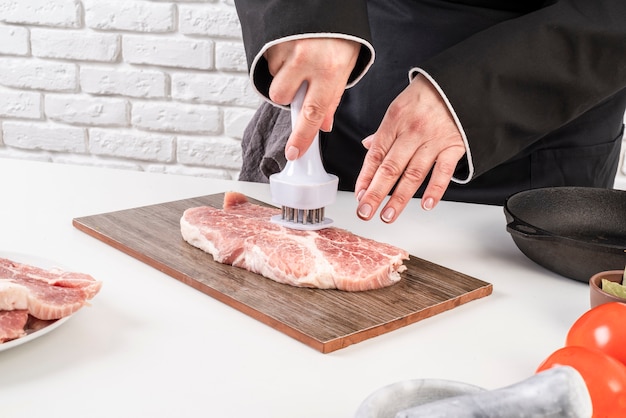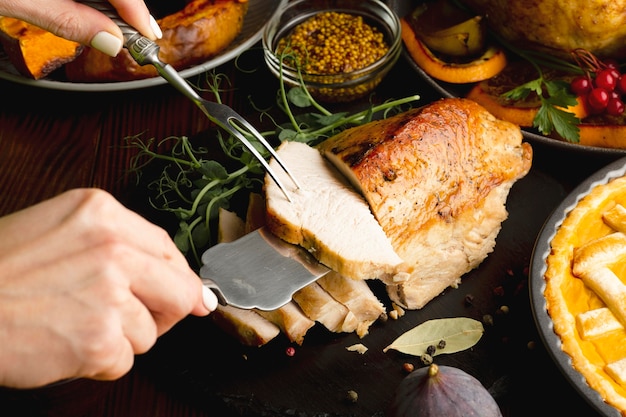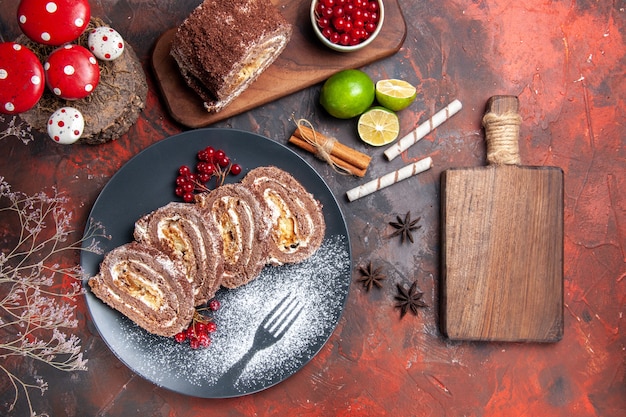Part 1: The perfect pork tenderloin

What Makes a Perfect Pork Tenderloin?
A perfect pork tenderloin is all about tenderness, flavor, and that beautiful, blushing pink hue at the center. It shouldn't be dry, it shouldn't be undercooked, and it should melt in your mouth. Now, that's what we're aiming for!
Choosing the Right Pork Tenderloin
The first step is choosing the right cut. And I’m a big fan of the tenderloin for a reason: it’s lean, it’s versatile, and it cooks quickly. But don't get tricked; you need to pick carefully. Look for a cut that's nice and even with good marbling. This means it has enough fat to stay juicy.
Don't be shy to give it a gentle squeeze. It should feel firm but not rock-hard. I've been caught out with a few dry, stringy ones in the past, so trust your gut!
Prepping Your Pork Tenderloin
Before even thinking about cooking, get your tenderloin prepped. It's all about maximizing flavor. First, pat it dry with some kitchen paper. Then, season generously with salt and pepper. Now, get creative! I like to use a simple rub of garlic powder, onion powder, and paprika. Or, if you're feeling adventurous, try a blend of herbs and spices.
And if you’re feeling fancy, a quick marinade is always a winner. For a classic flavor, try a simple mix of olive oil, lemon juice, and garlic. For something a bit more exotic, go for a soy sauce, honey, and ginger marinade. I've even used a simple blend of mustard and honey – it's incredible!
Part 2: The Big Cook-Off

Cooking Methods
This is where things get exciting. Pork tenderloin is perfect for so many different cooking methods. Let’s break them down:
Roasting
Roasting is my go-to method. It’s simple, foolproof, and always delivers a juicy, tender pork tenderloin. Preheat your oven to 375°F (190°C). Place the tenderloin on a roasting rack set over a baking sheet – using a rack ensures even cooking.
Here's a tip: don't overcrowd the pan. If you're cooking multiple tenderloins, space them out to ensure they cook evenly. Pop it in the oven for about 25-30 minutes, or until a meat thermometer inserted into the thickest part registers 145°F (63°C).
Let the pork tenderloin rest for 10 minutes before carving. This allows the juices to redistribute, resulting in a more tender and flavorful final product. This step is absolutely crucial, trust me!
Pan-Frying
Pan-frying is a great option if you're short on time. Heat a large skillet over medium-high heat. Add a tablespoon of oil and sear the tenderloin on all sides. This will give it a lovely golden-brown crust. Reduce the heat to medium, cover the skillet, and cook for about 15 minutes, or until the internal temperature reaches 145°F (63°C).
Let the tenderloin rest for 5-10 minutes before carving. It's also a good idea to use a meat thermometer to ensure the pork is cooked through. Better safe than sorry, right?
Grilling
Grilling is perfect for that smoky flavor. Preheat your grill to medium-high heat. If you're using a gas grill, preheat for about 10-15 minutes. If you're using a charcoal grill, let the coals burn until they are covered with a thin layer of white ash.
Place the tenderloin on the grill and cook for about 5-7 minutes per side, or until it reaches an internal temperature of 145°F (63°C). Make sure to rotate the tenderloin every few minutes to ensure even cooking. And again, rest for 5-10 minutes before slicing and serving.
Slow-Cooking
Now, slow-cooking is a real game-changer for pork tenderloin. It’s the perfect method for a melt-in-your-mouth texture. Place the tenderloin in your slow cooker with a little broth or water. Add some chopped vegetables if you like – onions, carrots, and celery are always a good choice. Cook on low for 4-6 hours, or until the tenderloin is fork-tender.
This is a lifesaver if you’re busy and want a hands-off meal. Just pop it in the slow cooker in the morning and come home to a delicious meal ready to go!
Part 3: The Doneness Dilemma

The Importance of Doneness
This is the heart of the matter. We've all been there, staring at a piece of pork, wondering if it’s cooked enough. It’s vital to understand that undercooked pork can be a health risk. So, how do we know it's safe to eat?
The Meat Thermometer
This is my go-to tool for ensuring my pork tenderloin is cooked to perfection. It's a small, inexpensive device that measures the internal temperature of the meat. It’s a game-changer for anyone who wants to avoid overcooked or undercooked pork.
Insert the meat thermometer into the thickest part of the pork tenderloin. The ideal temperature is 145°F (63°C). Once it hits that, your pork is ready to go. You can rest easy knowing it's safe and delicious!
Visual Clues
There are some visual clues that can help you determine if your pork tenderloin is done. If the pork is cooked through, it will have a firm texture and will be no longer pink in the centre. The juices should run clear when you pierce it with a fork.
Now, this is where experience comes into play. The more you cook pork, the better you'll get at judging doneness. But never rely on visual clues alone. Always use a meat thermometer to double-check!
Part 4: The Resting Ritual
Why Resting is Crucial
This is another step that often gets overlooked, but it’s crucial. Resting allows the meat to redistribute its juices, resulting in a more tender and flavorful final product. It might seem like a small detail, but it makes a big difference!
Resting Time
You'll want to rest your pork tenderloin for at least 10 minutes before slicing and serving. For larger cuts, you may need to rest for up to 15 minutes. This will give the juices time to redistribute and prevent the meat from becoming dry.
The Resting Technique
To rest your pork tenderloin, simply transfer it to a cutting board and loosely cover it with foil. This will help to keep the meat warm and moist. It's best to let it rest undisturbed so that the juices can redistribute evenly.
Part 5: The Slicing Symphony
Slicing with Precision
Once your pork tenderloin has rested, it's time to slice it up. This is where a sharp knife comes in handy. Use a slicing knife to cut the tenderloin into thin, even slices. If you're feeling fancy, you can slice it on the diagonal. This will give you larger, more impressive slices.
Serving Suggestions
Now, the fun part – how to serve this culinary masterpiece? The possibilities are endless! You can serve it with a simple side of mashed potatoes and gravy, or go for something more adventurous like roasted vegetables and a citrus dressing.
Here are some of my favorite pairings:
- roasted asparagus
- Sautéed mushrooms
- Creamy polenta
- Apple sauce
- Cranberry sauce
Remember, the key is to choose sides that complement the pork tenderloin. Don't be afraid to experiment and find your own favourite combinations!
Part 6: Beyond the Basics: Mastering the Pork Tenderloin
Adding Flavour
Now, you know the basics, but let's take things up a notch. Here's where we add some personality to your pork tenderloin.
Stuffed Pork Tenderloin
Stuffing is a fantastic way to add flavour and interest to your pork tenderloin. You can get creative with your stuffing ingredients. I love to use a mix of herbs, breadcrumbs, and vegetables. Here's a quick recipe:
Stuffed Pork tenderloin recipe
Ingredients:
- 1 pork tenderloin
- 1/2 cup chopped onions
- 1/2 cup chopped celery
- 1/2 cup chopped apples
- 1/2 cup breadcrumbs
- 1/4 cup chopped fresh parsley
- 1 teaspoon dried thyme
- 1/2 teaspoon salt
- 1/4 teaspoon black pepper
Instructions:
- Preheat oven to 375°F (190°C).
- In a large bowl, combine all the stuffing ingredients.
- Cut a slit down the length of the pork tenderloin, being careful not to cut all the way through.
- Spoon the stuffing into the slit.
- Fold the tenderloin over to enclose the stuffing.
- Tie the tenderloin together with kitchen twine.
- Place the tenderloin on a roasting rack set over a baking sheet.
- Roast for 25-30 minutes, or until the internal temperature reaches 145°F (63°C).
- Let the tenderloin rest for 10 minutes before carving.
This recipe is a real crowd-pleaser. The tenderloin is packed with flavor, and the stuffing adds a touch of sweetness and texture.
Pork Tenderloin with a Glaze
A glaze can transform a simple pork tenderloin into something truly special. It adds a layer of flavor and a beautiful shine. You can use a store-bought glaze or create your own. Here’s a simple glaze recipe:
Pork Tenderloin Glaze Recipe
Ingredients:
- 1/2 cup honey
- 1/4 cup soy sauce
- 2 tablespoons Dijon mustard
- 1 teaspoon garlic powder
- 1/2 teaspoon black pepper
Instructions:
- Combine all the ingredients in a small saucepan over medium heat.
- Bring the mixture to a simmer and cook for 5 minutes, or until the glaze has thickened slightly.
- Brush the glaze over the pork tenderloin during the last 10 minutes of cooking.
This glaze is sweet, savory, and tangy – the perfect accompaniment to pork tenderloin. The honey adds sweetness, the soy sauce gives it a savory depth, and the Dijon mustard provides a bit of tang.
pork tenderloin recipes
Here are a few more pork tenderloin recipes to inspire you:
- Honey Garlic Pork Tenderloin – this recipe combines the sweet and savory flavors of honey and garlic for a delicious and easy meal.
- Lemon Herb Pork Tenderloin – this recipe is bright and refreshing, with the tang of lemon and the aroma of fresh herbs.
- Maple-Glazed Pork Tenderloin with Roasted Vegetables – this recipe features a sweet and savory maple glaze and a side of roasted vegetables for a complete meal.
- Pork Tenderloin with Dijon Mustard Sauce – this recipe is a classic with a tangy and creamy Dijon mustard sauce that pairs perfectly with the pork tenderloin.
- Pork Tenderloin with Rosemary and Garlic – this recipe is simple and flavorful, with the earthy aroma of rosemary and the pungent taste of garlic.
Part 7: The Pork Tenderloin Family Tree
Pork Tenderloin vs. pork loin
There's often confusion about pork tenderloin and pork loin, but they're not the same thing. They come from different parts of the pig.
Pork loin is the larger cut that comes from the back of the pig. It's typically cut into chops, roasts, or fillets. Pork tenderloin, on the other hand, is a smaller, more tender cut that comes from the loin. It's shaped like a long, thin cylinder.
Pork Tenderloin vs. Pork Sirloin
Pork sirloin is another cut that is sometimes confused with pork tenderloin. It's a larger, leaner cut that comes from the sirloin part of the pig. While pork sirloin is also tender, it's not as delicate as pork tenderloin and can be a bit tougher.
Part 8: Pork Tenderloin Nutrition
Pork tenderloin is a lean protein source that’s packed with nutrients. It’s a good source of protein, iron, zinc, and B vitamins. It's also low in fat and calories, making it a healthy choice for a balanced diet.
Here's a nutritional breakdown for a 3-ounce serving of cooked pork tenderloin:
| Nutrient | Amount |
|---|---|
| Calories | 125 |
| Protein | 25 grams |
| Fat | 3 grams |
| Carbohydrates | 0 grams |
| Iron | 1.5 milligrams |
| Zinc | 1.5 milligrams |
| B Vitamins | Various |
Pork tenderloin can be a healthy part of a balanced diet, but it's important to cook it properly to ensure that it's safe to eat. Always use a meat thermometer to ensure the pork reaches an internal temperature of 145°F (63°C).
Part 9: FAQs
Now, let's answer some of your burning questions about pork tenderloin.
1. Can I Freeze Pork Tenderloin?
Absolutely! Pork tenderloin freezes beautifully. To freeze it, wrap it tightly in plastic wrap or foil. You can store it in the freezer for up to 3 months. To thaw frozen pork tenderloin, place it in the refrigerator overnight. It's best to defrost it slowly in the fridge for the best results.
2. What Happens if I Overcook Pork Tenderloin?
If you overcook pork tenderloin, it will become dry and tough. It's best to avoid overcooking it by using a meat thermometer to ensure it reaches an internal temperature of 145°F (63°C). If you do overcook it, there's not much you can do to salvage it, unfortunately. Just try to cook it more carefully next time!
3. Can I Cook Pork Tenderloin from Frozen?
You can cook pork tenderloin from frozen, but it will take longer. It's best to thaw it in the refrigerator overnight for the best results. If you cook it from frozen, be sure to add extra cooking time. You can also use a meat thermometer to check for doneness.
4. How do I Tell if Pork Tenderloin is Bad?
If pork tenderloin is bad, it will have a sour or off smell. It may also have a slimy texture or a discoloured appearance. It's best to discard any pork tenderloin that has a bad smell or appearance. Always store pork tenderloin in the refrigerator and use it within a few days.
5. What’s the Best Way to Store Leftover Pork Tenderloin?
Leftover pork tenderloin can be stored in an airtight container in the refrigerator for up to 3-4 days. You can reheat it in the oven, microwave, or skillet. You can also use leftover pork tenderloin to make sandwiches, salads, or stir-fries.
There you have it. The ultimate guide to cooking pork tenderloin. Now, go forth and conquer the kitchen! Remember, practice makes perfect. So, don't be afraid to experiment and find your own favourite ways to prepare this delicious and versatile cut of meat. Happy cooking!
Everyone is watching

How to Cook Frozen Lobster Tails Perfectly: A Step-by-Step Guide
RecipesLobster. Just the word conjures up images of lavish meals, special occasions, and a taste of luxury. But let's...

Pigs in a Blanket Cooking Time: How Long to Bake for Perfect Results
RecipesAh, pigs in a blanket. Just the name conjures up images of those delightful little parcels of crispy pastry en...

Pork Fillet Cooking Time: How Long to Cook It Perfectly
RecipesPork fillet, or tenderloin as it's sometimes called, is a real favourite in our house. It's so versatile, and...

The Ultimate Guide to Cooking Delicious Frankfurters
RecipesLet's face it, we all love a good frankfurter. It's a classic, simple, and always satisfying. But let's be rea...

The Ultimate Guide to Tender, Juicy Pulled Pork
RecipesRight, let's talk pulled pork. It's one of those dishes that just screams "comfort food," doesn't it? I mean...
